[App Fridays] Coding is the future, and SoloLearn helps you crack this code
Elementary coding skills are becoming increasingly indispensable in a software-driven world, and SoloLearn is here to help you take your first steps.
Technology has taken over the world and put the spotlight squarely on coding. Coding, or computer programming, is what makes it possible to create software, apps, and websites, and understanding how to write code is one of the most in-demand and prized skill sets in the global economy. With even schools waking up to the importance of coding, it’s important for everyone to enter this tech-driven world.
Enter online interactive platforms like SoloLearn, which offer learning options anywhere in the world.
SoloLearn was set up in 2014 in Armenia by Co-founders David Kocharyan, Davit Kocharyan, and Yeva Hyusyan to teach coding to the local population. Since then, the platform has grown rapidly, with over 1 million downloads on the Google Play Store (at the time of writing this). The company has raised over $1.3 million in funding across three seed rounds from Granatus Ventures and Learn Capital. The app was also the Grand Prize winner in Facebook’s FbStart Apps of the Year event in 2017.

SoloLearn relies on gamification, P2P content sharing, and user-generated content to give tutorials and information about coding to its users. There are 24 topics to choose from – ranging from HTML to SQL to Ruby, and more – and all the course material on the platform is free. SoloLearn is betting on ads and a subscription-based PRO service for revenue, encouraging users to create, share, and discuss content. As of July 2017, 25 percent of the user base was from India, 25 percent from the US, and the remainder from across Europe.
How does the app work?
SoloLearn tracks user progress over time; it also has a strong community aspect. First-time users open the app and sign up for a fresh account, and it is ready-to-use after a quick and painless signup process.
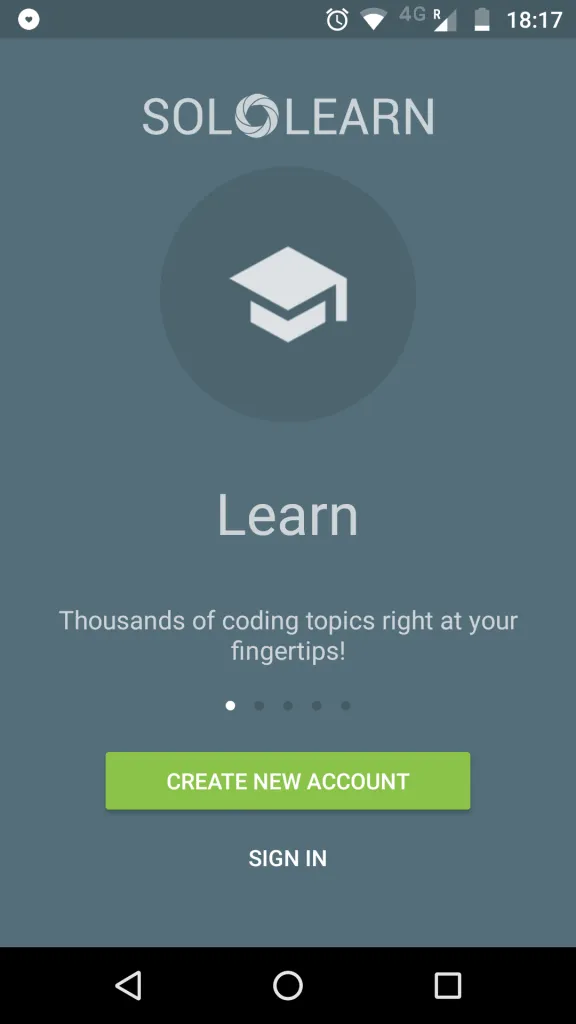
SoloLearn’s home screen is an Activity Feed of updates on the platform (think Facebook News Feed). Here users can see updates from friends, public users, and more.
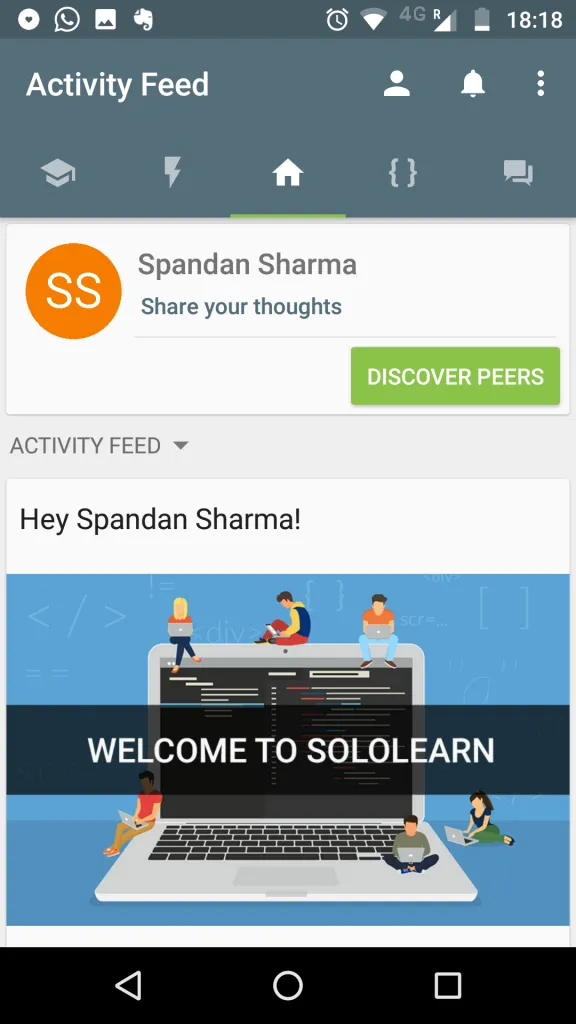
On the Learning screen, users can choose from the range of free courses available. Each course is broken up into several modules and stages – completing all the modules from a stage opens up the next one, and so on. There are also coding challenges for users to practise their coding skills.
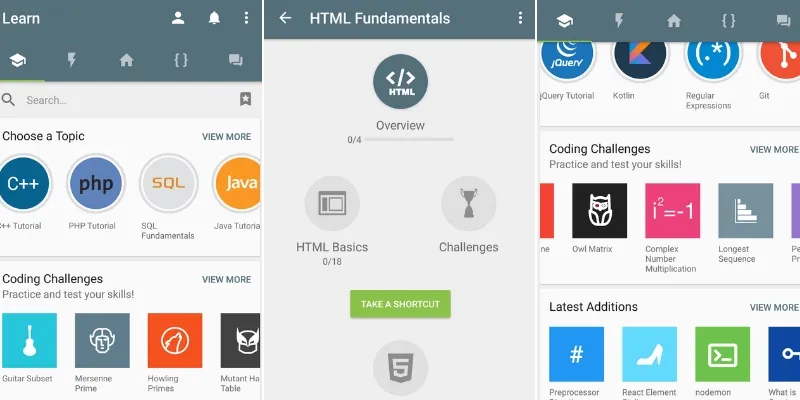
Each module has short videos explaining a certain topic. Users also have the opportunity to create, test, and save code freely in the in-app Code Playground.

Coding challenges let users practise their skills and take on other community members in head-to-head challenges within defined parameters, and unlock hidden lessons.
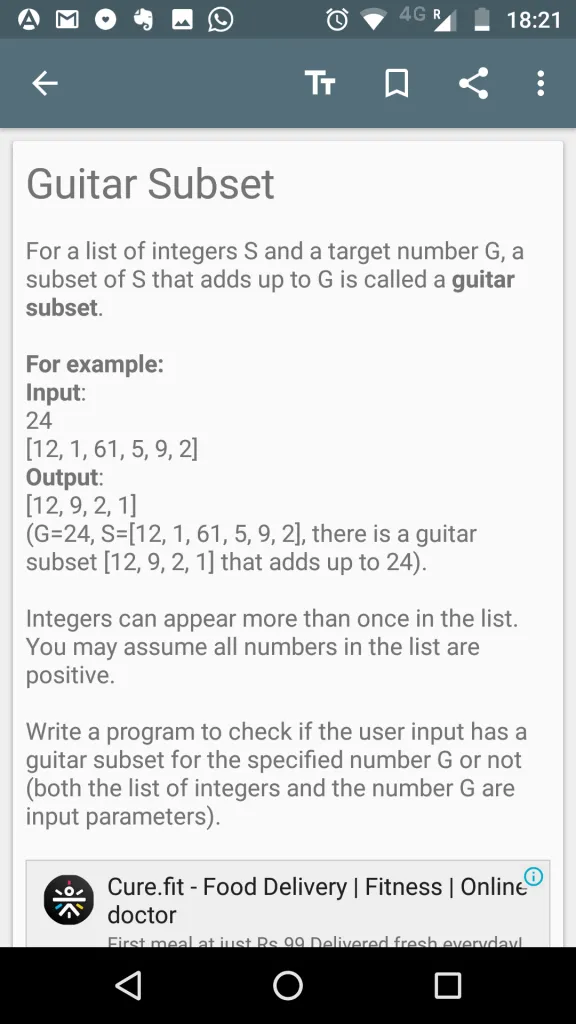
Users can also publicly share their saved code and view public code from other users in a form of peer-to-peer learning.

The Q&A Discussions section is a forum where community members can post and answer queries, and interact with other users.
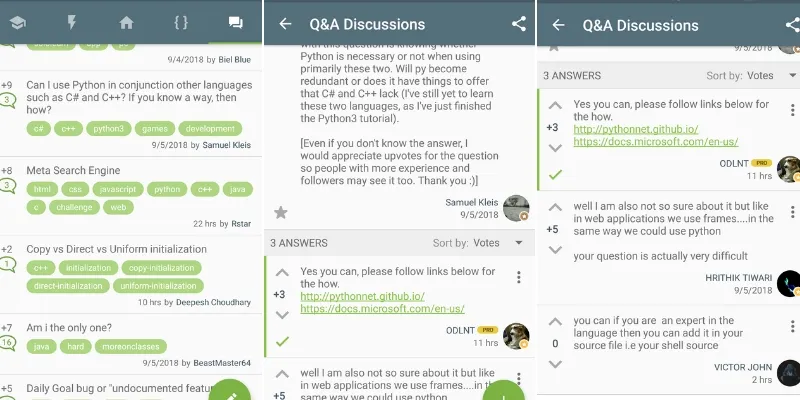
Accessing your profile gives you the chance to see your learning progress so far (with Milestones tracking your growth); you can also earn Badges tied to key actions, and add friends.

There is even a Leaderboard, ranking users by the amount of XP they’ve earned on the app (based on their activities and interactions). Users can also make suggestions for lessons and quizzes/challenges, further building the UGC aspect of the app.
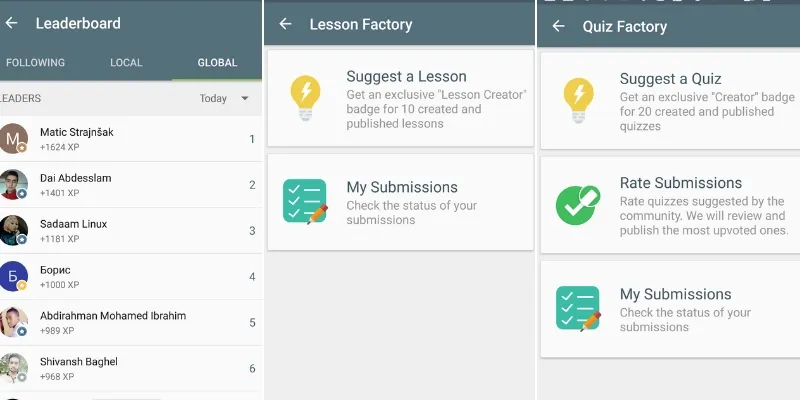
SoloLearn is a completely free-to-use platform – with ads. For a monthly or annual subscription, however, users can upgrade to SoloLearn PRO, getting rid of ads and adding some extra features such as Personalised Activity Insights.
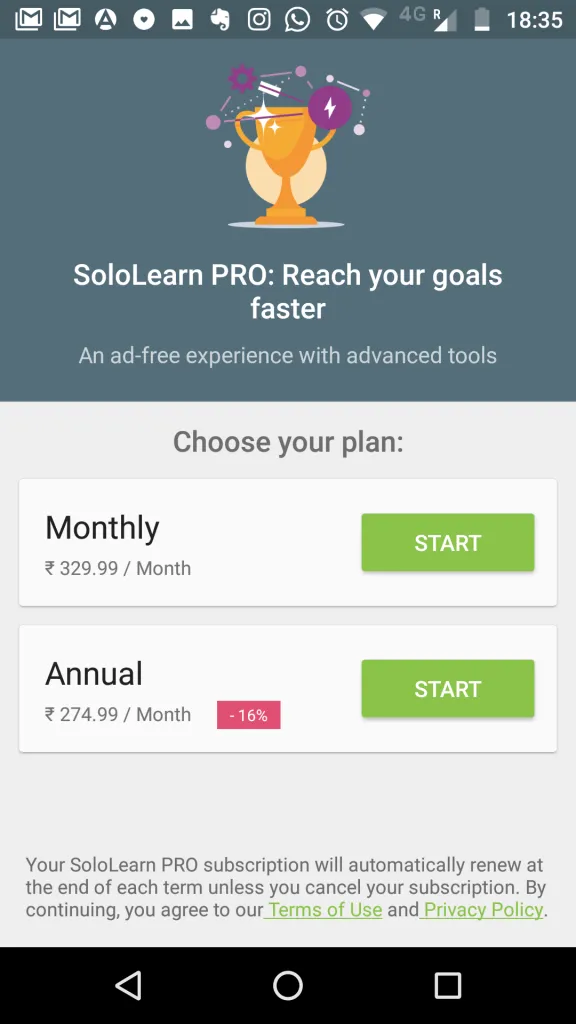
Learn coding solo
In an interview with TechCrunch, SoloLearn CEO and Co-founder Yeva Hyusyan stressed that the app had the “friendliest” community of peer learners. She said, “You get an answer from your peers in our Q&A forum within minutes; we have over half a million public codes on SoloLearn today that are used as a great peer-to-peer learning tool; tens of thousands interactive peer-to-peer challenges are completed daily.”
The app has received a lot of traction recently, with over 5 million profiled learners, 1.5 million quizzes completed daily, over 1,000 answers published every day, and an average of three codes compiled every second.
SoloLearn is not meant as a definitive learning resource for coding – not by a long shot. But in a world where having even basic coding skills is becoming increasingly useful, the app does a wonderful job of teaching the basics to coding enthusiasts everywhere. The best part? It’s completely free. So fire up SoloLearn to make yourself future-ready, one line of code at a time.


![[App Fridays] Coding is the future, and SoloLearn helps you crack this code](https://images.yourstory.com/cs/wordpress/2018/09/Coding-SoloLearn.jpg?mode=crop&crop=faces&ar=2%3A1&format=auto&w=1920&q=75)




